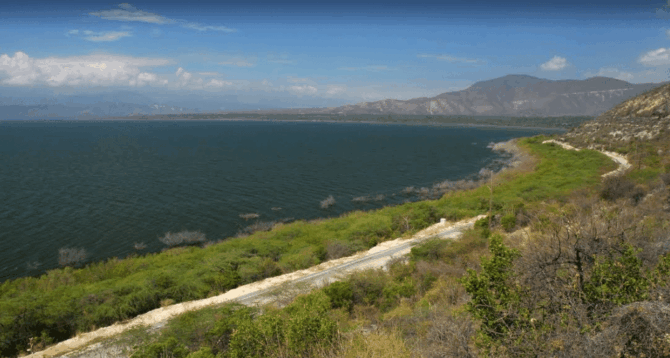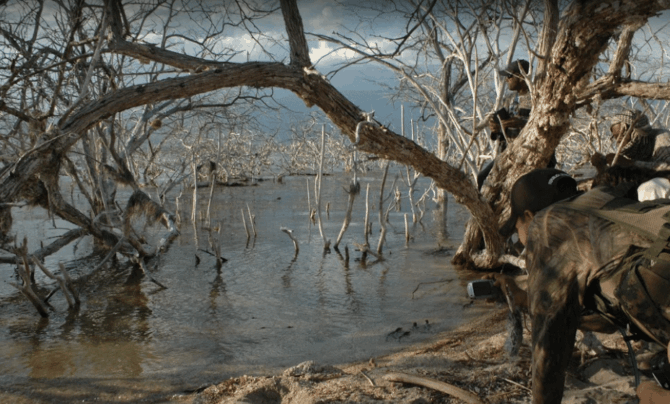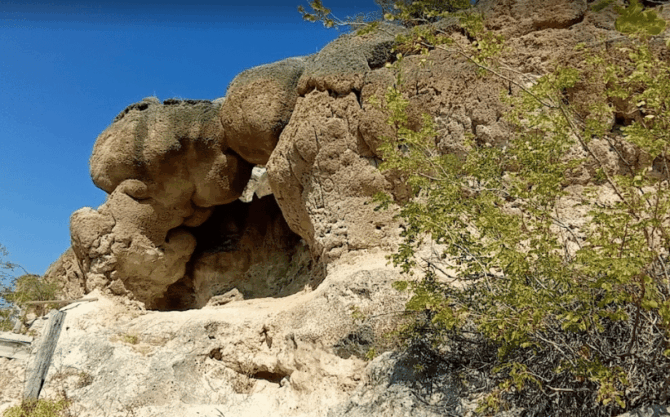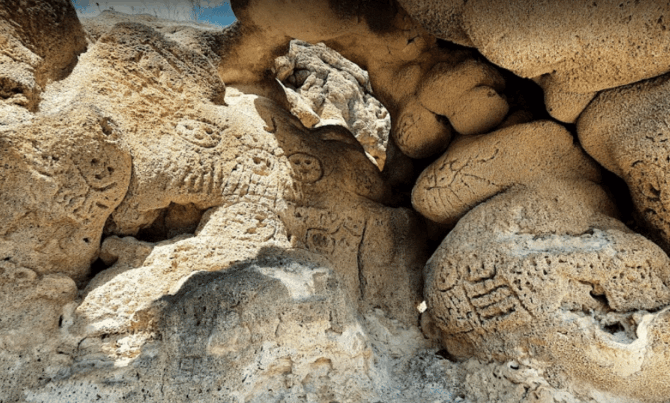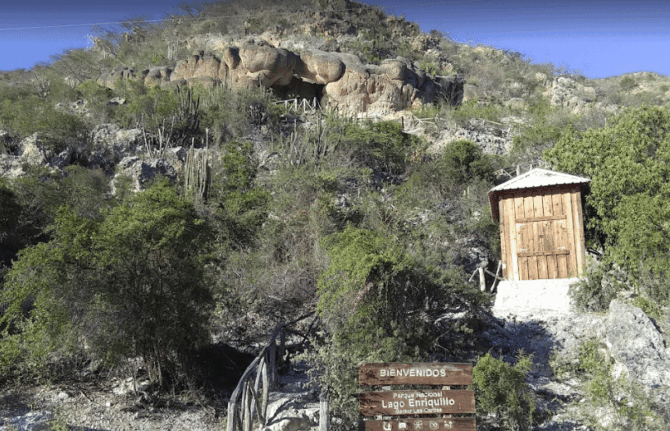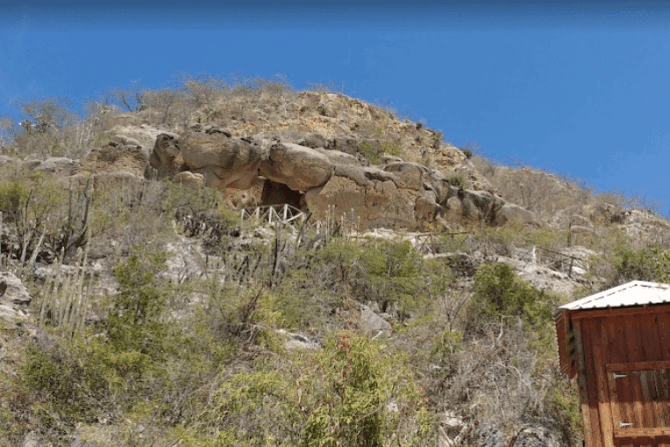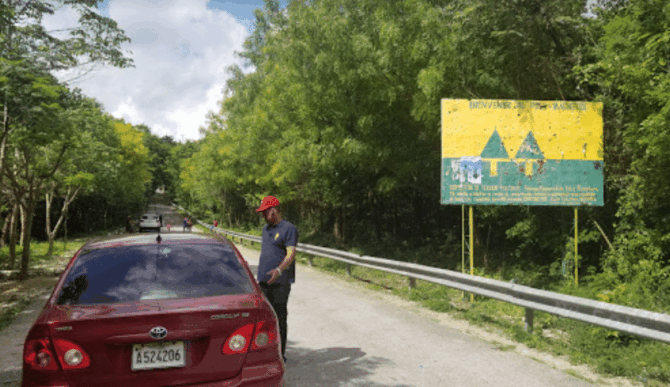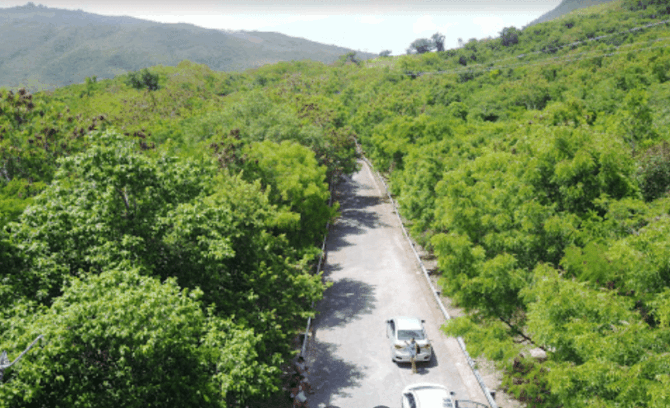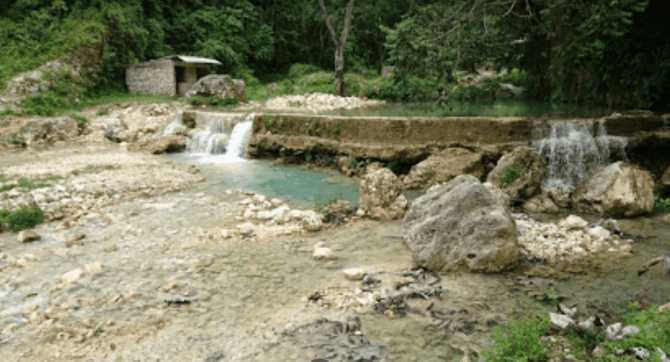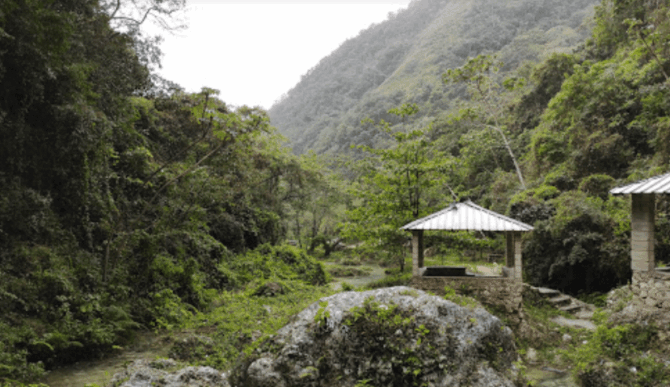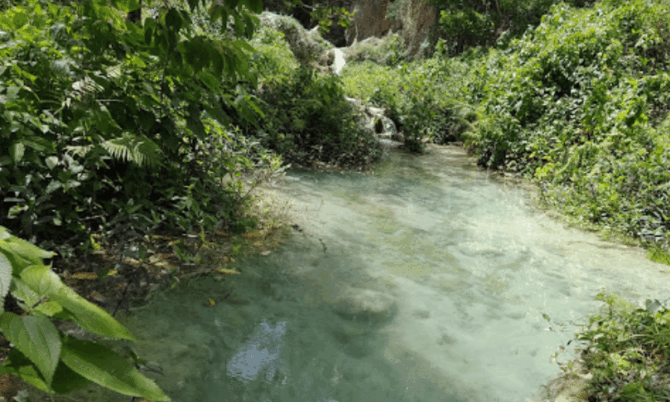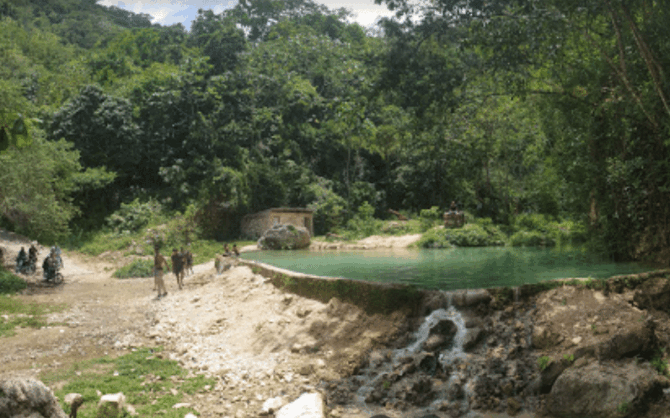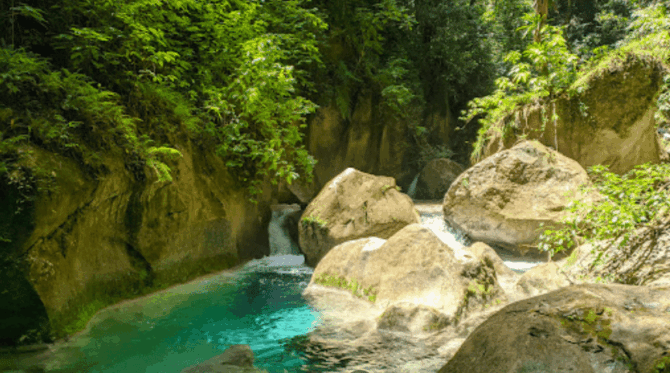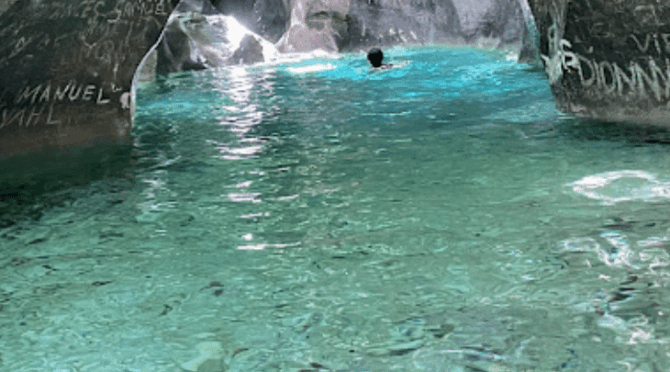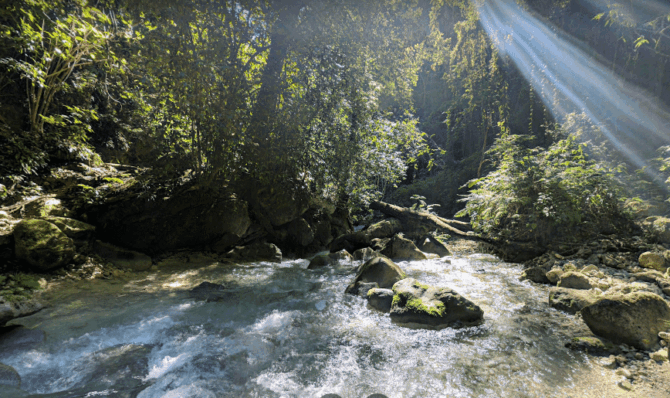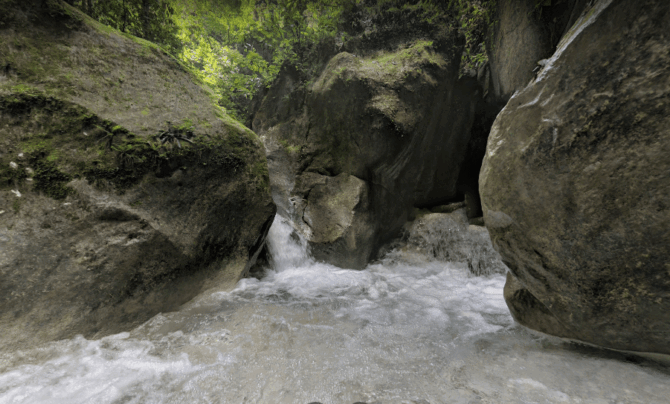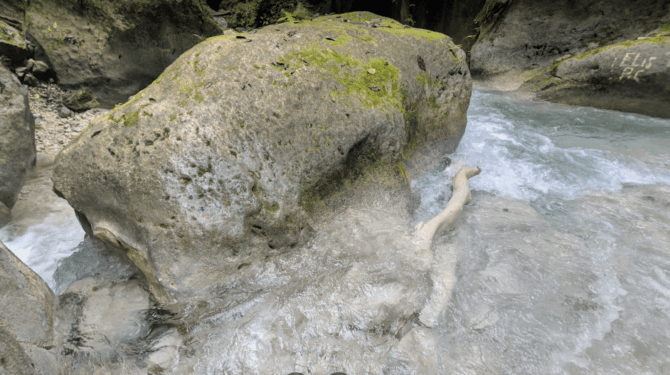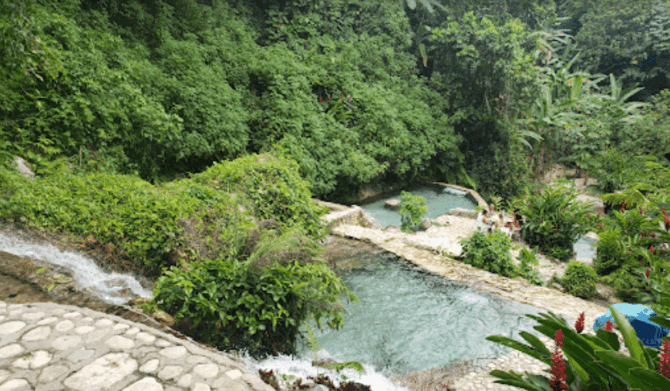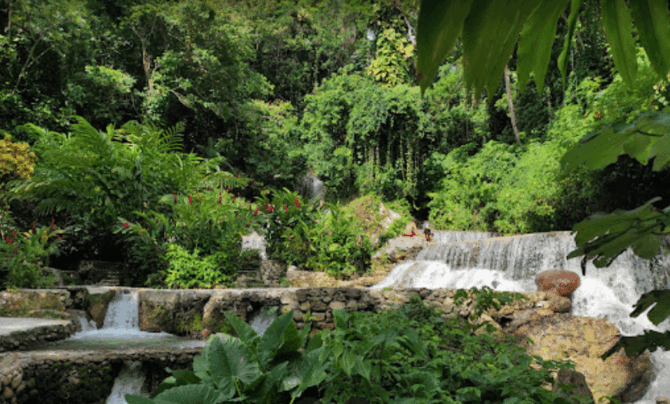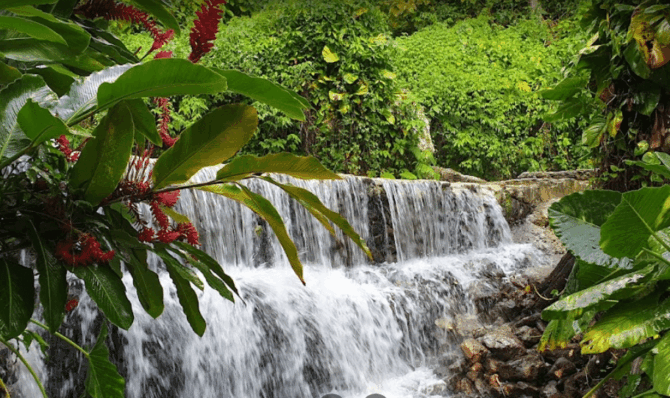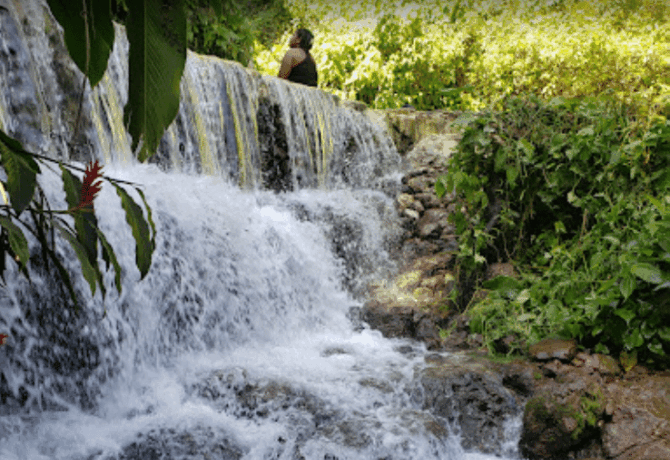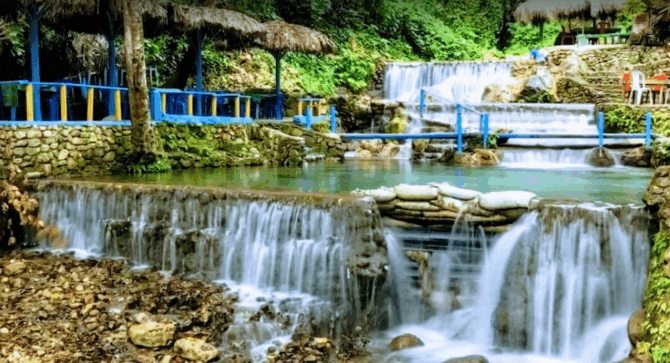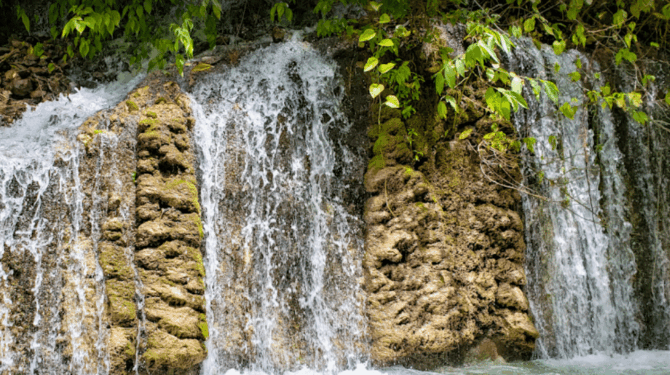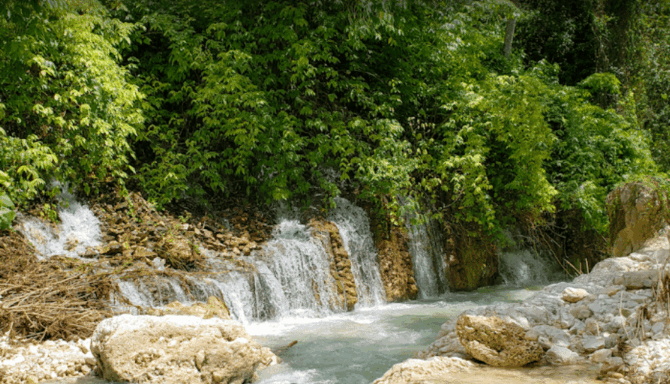On the southwest coast of the Dominican Republic, 200 km from the capital of the state of Santo Domingo, is the unique beauty of the resort of Barahona. Tourists choose this direction because of the huge number of natural attractions. There are 3 diverse eco-zones in the region: the bays of the Caribbean Sea, a freshwater river with a large population of crocodiles and the anomalous polo Magneto zone. On the territory there are 3 parks of national importance – Jaragua, Sierra de Baoruca and Isla Cabritos.
To organize excursions, resort hotels provide the services of private guides, jeep and car rental. Transit travelers are advised to stay here for 3-4 days in order to have time to visit all the sights. Here are some of the cleanest beaches of the Dominican Republic. A couple of steps from them are equipped with ECO-lodges – popular hotels, decorated in a folk style and built from natural materials. Taking into account the interests of tourists to travel, parking is provided in each hotel complex.
The review presents the most interesting natural and historical sights of Baraona. They can be bypassed in one day or stretch the pleasure for several days. Near each of the objects you can find a place to spend the night. These include hotels of different categories, private villas and guest houses, campsites (in the parks).
- 1 Attractions Barahona on map
- 2 Enriquillo Salt Lake
- 3 Kabritos Island National Park
- 4 Native American emoticons (Caritas de Los Indios)
- 5 Sierra de Bahoruco Mountains and rainforests
- 6 Magnetic Pole (Gravitational Hill)
- 7 Mountain lake Balneario Mata de Maiz
- 8 Balneario La Plaza Mountain Lake
- 9 Baths Balneario Villa Miriam
- 10 Zipline Casa Bonita Tropical
- 11 Beata Island
- 12 Laguna Oviedo
- 13 Cascades of Mata de Rulo waterfalls
- 14 Orlov Bay
Attractions Barahona on map
Enriquillo Salt Lake
The endorheic Lake Enriquillo is considered one of the Caribbean anomalies. It is one of the few lakes filled with salt water. Most of these reservoirs are fresh. In size, it is the largest lake in the region and is located at its lowest point in the West Indies above sea level. Little is known about its origin, but there is a hypothesis. 10 million years ago, the island was divided into 2 parts by a strait connecting the Caribbean Sea with the Atlantic Ocean. Due to frequent earthquakes, tectonic plates began to move. They connected the two parts and turned them into a single piece of land. Enriquillo in the Dominican Republic, as well as Lake Ethar-Sumatra in Haiti, have become remnants of landscape changes. Both are very large and salty.
In 2002, the lake was included in the list of UNESCO biosphere reserves. You can move around it only as part of excursion groups, your cars are left in the parking lot in front of the entrance. Just outside the gates, tourists are already waiting for iguanas. Lizards are well aware that the sound of cars approaching promises them a delicious treat. Don’t disappoint them. Reptiles love ripe bananas, which are eaten directly with the skin. The next inhabitants of this natural hostel are American crocodiles. They feed on fish and birds. According to the caretakers, they do not pose a threat to people. Also on the shores of the lake live about 300 species of birds. The reserve is open to the public from 07:00 to 19:00. The ticket price depends on the season.
Kabritos Island National Park
On Lake Enriquillo there are 3 islands – Cabritos, Islita and Barbarita. Of greatest interest is the Cabritos ecosystem. A National Park is formed here, located in the heart of the reservoir. Its area is 24 sq. km. The island has an elongated shape. Nature and climate are dramatically different from other places. The sun roasts mercilessly here all day. The whole area is covered with low-growing vegetation and cacti. The island is inhabited by toothy American crocodiles, almost completely destroyed on the continent. Here, the population has been preserved and its number is constantly increasing. Six-meter sharp-snouted crocodiles feed on fish and birds, they do not pose a particular danger to people.
In the vicinity of caimans live families of large iguanas and several hundred species of birds. Tourists are waiting for a meeting with pink flamingos, blue herons and other representatives of the feathered world. The tour is conducted by boat accompanied by a guide. It is advisable to stock up on mosquito repellents, wear comfortable shoes and be sure to wear a panama on your head. Under the rays of the merciless sun, you can burn within half an hour. It is a very secluded place with preserved wildlife.
Native American emoticons (Caritas de Los Indios)
On the island of Karitos, you should definitely visit the rock caves. In prehistoric times, the ancestors of modern Indians lived in them – the Taino tribe. A stone path leads to the top of the hill. It is slippery and not very comfortable, so you need to wear comfortable sports shoes. From the top there is a superb view of Lake Enriquillo, the island of Caritos and its surroundings. Then the guide leads a group of tourists to the caves with rock paintings. This is an obligatory stop where you can take photos as a souvenir against the background of Indian petroglyphs.
Ancient people captured in the drawings signs resembling emoticons. These are smiling people, drawn in a primitive style with round faces and a schematic body. It is difficult to descend into the cave – the steps are slippery, there are no steps in some areas. After sunlight, you will have to get used to the semi-darkness. But the tour will bring great pleasure to lovers of ancient artifacts.
Sierra de Bahoruco Mountains and rainforests
The Sierra de Bahoruco Mountains with their tropical forests are united in the national park of the same name. It is located between Lake Enriquillo and Jaragua Park. Its visit will be a logical continuation of the excursion, started from the shores and island of the salt lake. The territory can be divided into three areas – the Bahoruko mountain range, the tropical forest in the valley and mixed forests on the slopes of the mountains. Researchers believe that the mountains were formed during the Etzen and Pliocene epochs (up to 56 million years ago) while the Caribbean plate was formed. Algae particles have been found in sedimentary rocks.
This is the most symbolic and anomalous place on the whole island. Here is the Pelempito hole with a width of 2.5 and a length of 7 km. It appeared as a result of the collapse of tectonic plates. Many of the phenomena occurring here defy logical explanation. The nature of the Sierra de Bahoruco mountains fascinates with its beauty. It is home to 32 species of birds, including those that are on the verge of extinction. The peculiarity of the flora of the park is a wide variety of orchids. Along the paths of the park it is pleasant to walk under the shade of the sprawling trees before returning to the beach. The walk takes 2-3 hours depending on the chosen route.
Magnetic Pole (Gravitational Hill)
Pelempito’s hole should be addressed separately. The section of highway next to it was called the “Anomalous Zone of Polo Magnetico” (Polo Magnetico). Strange things happen here that many tourists have experienced on themselves and on their cars. If you put the car in neutral gear on the way uphill, then against all odds it will not go down, but will begin to rise to the top. Why this happens, scientists can not explain. Perhaps this is an optical illusion or an impact on the mechanisms of a unique magnetic force. Locals claim that at night the mountain glows, and inside it something howls and rumbles.
The anomaly attracts thousands of tourists here. Contrary to popular belief about the dangers of exclusion zones, in the Sierra da Bahoruco mountains, people do not disappear or go crazy. Travelers are very happy with the locals. Local cafes serve the most delicious coffee on the coast, and hospitable campsites provide autotourists with the best conditions for overnight stays. For those who travel on foot, mini-hotels open their doors. They can also conduct an experiment on an abnormal site. To do this, you need to put a bottle of water on the road. visually, it will begin to move upwards. The Polo Magnetico site is marked with plaques.
Mountain lake Balneario Mata de Maiz
The mountain lake Balneario Mata de Maiz is a kind of tourist attraction, invented by nature itself. It is a resort in the mountains with numerous water pools filled with cool water. Their depth is determined by the color of the water – the deeper, the more saturated the blue hue appears. To get here, you will need a car, preferably a jeep. You can book a tour in the excursion agency. The place is suitable for relaxing with friends, family, individual relaxation.
Hikers can best start from the mountain town of Polo. The descent to Mata de Mais takes 45 minutes. A gentle slope leads to the natural baths. There are no cafes and shops on the territory, so you need to take water and food with you. The object does not belong to the tourist infrastructure, does not belong to hotels, holiday homes or any resorts. This is a natural area accessible to visitors at any time of the day and absolutely free of charge.
Address: Carretera a Mata de Maiz, Polo 81000, Dominican Republic
Balneario La Plaza Mountain Lake
La Plaza is an incredible place with crystal clear water among the wildlife. The swimming pool is located in a small canyon that lets in the sun’s rays, so both water and stones warm up. Excursion agencies and hotel administrators strongly recommend using the services of local guides. The road from Barahona to the mountain lake takes about 2 hours, but it is worth it to spend time on this natural attraction.
There are few people here. The water is crystal clear, the air is fresh and mountainous. Going here, you need to take care of comfortable shoes, a hat from the sun, water and food. This is a wilderness that is not included in the landscaped tourist infrastructure. Swimming in natural pools brings great benefits to the body and human health. Once on the spot, people feel like in paradise. Stone bowls are surrounded by picturesque nature and can serve as a background for photo shoots.
Baths Balneario Villa Miriam
Villa Miriam in San Rafael (a suburb of Baraona) is a private residence with swimming pools and natural waterfalls. They were formed on the mountain river San Rafael. A private health resort was created here. In the 1970s, it was founded by a Lebanese businessman who lived in Barahon as a second home. Today, it can be rented for private events such as weddings, birthdays, christenings and corporate parties. It is a magical place where thousands of Dominicans and tourists come to swim in the cool waters of the pools. If you warn the administrator in advance, then you can stay here for the night.
Entrance is 300 pesos for adults and children over 12 years old, 200 pesos for children from 5 to 12, free for beneficiaries and pensioners. Visitors can bring food and drinks as there is no food or drink indoors. Villa Miriam is open daily from 9:00 am to 6:00 pm. Many travel agencies offer a trip to the baths of Balneario Villa Miriam, but it is quite possible to get there on your own, as the place is easy to find.
Zipline Casa Bonita Tropical
20 km from Barahona high in the mountains is the unique 5-star lodge “Casa Bonita Tropical”. The hotel is hidden in the jungle. He expanded his offering with River Suites, located on the banks of the river, in the middle of a spa area surrounded by massive trees. A helipad and a zipline for thrill seekers are available on site. The largest cable car is located in the neighboring region of Punta Cana. Now here you can enjoy picturesque views of the surroundings from a bird’s eye view. It is not recommended to take a smartphone with you. It can be dropped and lost forever. A video camera with a hand mount will be more reliable, and the quality of shooting will be more professional.
Those wishing to fly over the abyss are given helmets and special equipment. A briefing is provided before the flight. Instructors will show which fasteners can be held and which can not. The platform is located on the top of the mountain. This is a wooden platform from which descents on steel cables start. The cost of one flight is $ 10. If there is a desire to ride on the “heavenly swing”, then it is best to go to Mount Redonda, which is located in the province of Punto Cana. It is a 3-hour drive from Barahona towards the northwest.
Beata Island
Beata Island is the southernmost point of the island of Hispaniola. Its area is 27 sq. km. It is uninhabited and is part of the ECO tourism structure and is part of the Jaragua National Park. The islet was discovered by Christopher Columbus in 1494. First it became a haven for the Spanish conquistadors, and then for the pirate brotherhood, which kept in fear all ships entering the Caribbean. Researchers believe that in ancient times, the Taino tribe lived on the island, but then people left it. Man did not have time to spoil the pristine beauty of nature, although for hundreds of years salt was mined here. But the resources turned out to be few and in 1960 the last inhabitants left the island.
The beauty of the island is limitless. Its sandy shores are washed by the turquoise waters of the sea, in the north there are mangrove swamps, in the west karst caves have formed. They are inhabited by bats. This land is an untouched paradise for animals and birds. It is home to rare species of geckos and snakes, sea turtles, flamingos, pigeons. A trip to Beata can be arranged by local fishermen. But usually tourists buy a tour of the Jaragua National Park, which includes a visit to the island of Beata.
Laguna Oviedo
A tour of Jaragua Park also includes a visit to the salt lake Oviedo. It is the largest lagoon in the country. Its shores are covered with mangroves, which are inhabited by reptiles and birds. There are impassable swamps and shoals. In any case, it is better to book a water tour in order to have time to explore the surroundings in 1-3 hours. You can arrange a trip at the entrance to the park. On the highway near the lagoon, the office of the Ministry of The Environment and Natural Resources is open. Employees take the organization of excursion groups and their support. The best time to visit the Oviedo Lagoon is in the early morning. After 10 am, unbearable heat begins. It is better to wait it out on the beach or in a hotel.
There are 24 uninhabited islands on the territory of the lagoon. They are inhabited by animals and birds. On the largest of them, for example, you can watch the rhinoceros iguanas. The color of water cannot be expressed in words. This is a mixture of green, yellow, gray shades. Against their background, pink flamingos look like a creative find of a surrealist artist. The lake was formed millions of years ago as a result of the movement of tectonic plates. Therefore, the water in it is saltier three times than in the sea, and the mixture of limestone and a special type of algae gave it a unique color.
Cascades of Mata de Rulo waterfalls
The Dominican Republic is famous for its magnificent cascading waterfalls. Mata de Rulo are not the most popular ones. They are passed by all the tourists who went on an excursion to the Jaragua National Park. Here it is nice to stop, sit under a sprawling tree, admire the falling water. Several shallow stone bowls form pools filled with crystal clear water. Next to them is a path along which you can continue the path to other beauties of the national park. For travelers, a gazebo has been built, where you can relax under a canopy made of straw. Those who wish to swim carefully descend into the water on smooth stones. The rocky shores of the pool are covered with greenery and look very picturesque.
Orlov Bay
A visit to the Bay of Eagles is included in almost every excursion tour around Baraona. Very often tourists from other regions of the island come here to admire the nature untouched by civilization. The landmark is located on the edge of the Jaragua National Park and borders the neighboring Haitian Republic. Oddly enough, but there are no eagles here. Only the Caribbean Sea, sandy beaches and absolutely wilderness.
There are no hotels, shops, restaurants, but there are 3 campsites where you can stay for the night. They are 300 metres from the park entrance. Two of them are located on the beach, one 70 meters from the coastline. Beds are available in canvas tents, tents or small plywood bungalows. Outdoor furniture, kitchen utensils are provided. In the far glamping there is electricity and full beds.
The ticket office is open from 09.00 until sunset. The ticket price is 300 pesos (dollars are not accepted, and there are no exchange offices in the district). Free parking is available under the mountain. From the scorching sun, the machine is protected by a karst natural canopy. This is the driest region of the Dominican Republic, so you need to take a hat, water and food with you. You can visit throughout the year, because. even in the rainy season, there is almost no precipitation. Signs of desert are found at every step – cacti, low-growing trees and grass grow along the road. There are three observation decks if you walk.
The main entertainment is the beach. Here they sunbathe, swim, watch pelicans, go diving, look for starfish and take pictures. The bay is inhabited by pelicans that catch fish, diving into the water like a bird of prey. In the center of the beach there is a tower with an observation deck. From it it is more convenient to observe everything that is happening around.
Barahona is the wildest province of the Dominican Republic. It is appreciated for its unique nature and the complete absence of harmful industries. The local population is famous for its hospitality. Not to say that all the hotels are chic, but the conditions for living are more than acceptable, and the food in the restaurants is simply amazing. Experienced travelers recommend coming here by car. So it will be more convenient and cheaper to visit the sights.



